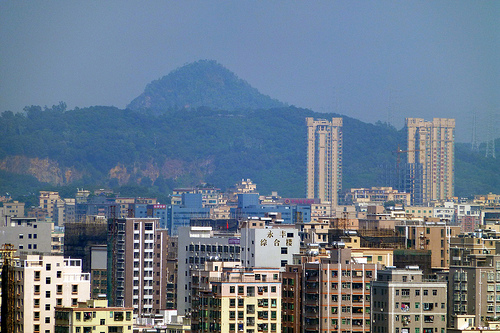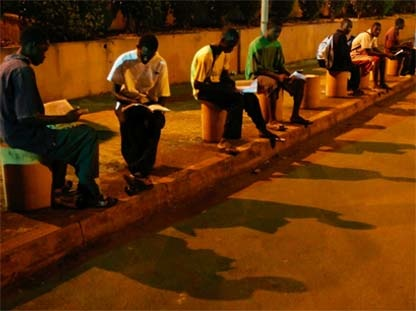Learning from Dubai and Shanghai
+ Kari Kohn
Daniel Brook recently published excerpts about Shanghai and Dubai from his new book, A History of Future Cities. Though neither city fits the definition of a charter city, their histories provide useful case studies.
China’s experience shows that a successful new city in a special zone, in this case Shenzhen, can create spillover effects, encouraging reform in other areas, in this case Shanghai.
Two decades ago, when Shanghai’s leaders looked out over the new New China born of Deng Xiaoping’s economic reforms, it seemed history had gone off the rails. It wasn’t Shanghai, the city that invented Chinese capitalism, but Deng’s new experimental instant metropolis, Shenzhen, on the border with Hong Kong, that was brimming with factories and drawing thousands of ambitious young people from across the country. It was as if Deng had held a great national casting call for China’s next business hub and upstart Shenzhen had gotten the part Shanghai assumed she was destined to play.
A charter city involves starting a new city with new rules on a greenfield site and allowing people to opt-in. In the Pudong New Area, a Special Economic Zone (SEZ) in Shanghai, this dynamic of voluntary opt-in was absent. The government evicted existing residents to make way for the SEZ, moving them to nearby apartment towers. The forced evictions were unfortunate but Pudong does offer an interesting case study in land-based finance. The government owned the land and used land lease revenues to finance infrastructure development.
The real purpose of the evictions was to clear land for new, quasi-private real estate development — the first permitted in Shanghai since the revolution. Stacking people vertically who had been spread out horizontally opened up land that the authorities then leased to wealthy developers often based in Hong Kong or Taiwan. These leases brought the government a windfall that it plowed into building the world’s greatest civic infrastructure, including the brand new international airport linked to the financial district by maglev train, a new subway system larger than New York’s or London’s, and a plethora of bridges and tunnels connecting the historic center of Shanghai in the former foreign concessions to its new financial center in Pudong. In the first decade of developing Pudong, Chinese authorities spent over US$10 billion on the neighborhood’s infrastructure.
For Brook Dubai is a city connected to the global network of cities via its airport. While Dubai (as well as Shanghai) was conceived as a city for the affluent, it is conceivable that an “aerotropolis” strategy could work in a city meant to offer opportunities to people seeking their first formal sector job.
For 300 years, instant cities modeled on the West have been built in the developing world in audacious attempts to wrench a lagging region into the modern world. While the rise of these global crossroads cities was once checked by the speed of ocean liners and locomotives, today their growth is powered by intercontinental jets that can move a passenger from any major city in the world to any other in a single day. So while the city of Dubai is new, the idea of Dubai is not. It’s just that in the age of jet-powered globalization, the idea can achieve liftoff as never before.
In order to attract investment and firms, Dubai adopted English civil and commercial laws in some of its free zones. However, given that the question of “Who guards the guardians?” is particularly perplexing in Dubai, it is not clear whether the imported institutions have legitimacy. What’s more, there appears to be less interest in generating institutional spillover effects outside of the zones themselves.
Jebel Ali Free Zone was more like a Special Economic Zone in Deng Xiaoping’s China, where separate laws applied within the SEZ than beyond the gates. Beyond the borders of Jebel Ali, strict, traditional Shariah law would still govern business relations (under Shariah, for instance, those who can’t pay their debts are imprisoned). But inside the new free zone, business could be done much as it was done in the West, according to a specially crafted civil legal code geared specifically toward port businesses. Jebel Ali thrived under the new regime, becoming one of the busiest ports on the planet. Today, it processes over 10 million shipping containers annually.
With the success of Jebel Ali, Sheikh Mohammed began carving other free zones out of the desert, each specifically designed to woo an industry he felt would benefit Dubai. But carving Dubai up into free zones was more than just an economic development strategy. Being a single city governed under multiple legal regimes would come to define Dubai. Global cities have always struggled with how to apply laws to their diverse assemblages of people. Through its patchwork of free zones, Dubai had come up with a new answer. While in the foreign concessions of Shanghai, different people were bound by different legal codes based on their nationality, in Dubai the same people would be governed by different legal codes depending on where they were within the city. In Shanghai, extraterritoriality meant that no matter where you were in the treaty port, you were, in a legal sense, always back home; in Dubai, the free zones made traveling from neighborhood to neighborhood, in a legal sense, like moving from country to country.
…“The whole concept here was to vacate 110 acres of [land of UAE] laws, just empty it of civil and commercial laws,”…And then we had to write our own laws to fill up that vacuum. And those laws are based on mainly UK [regulations]”


